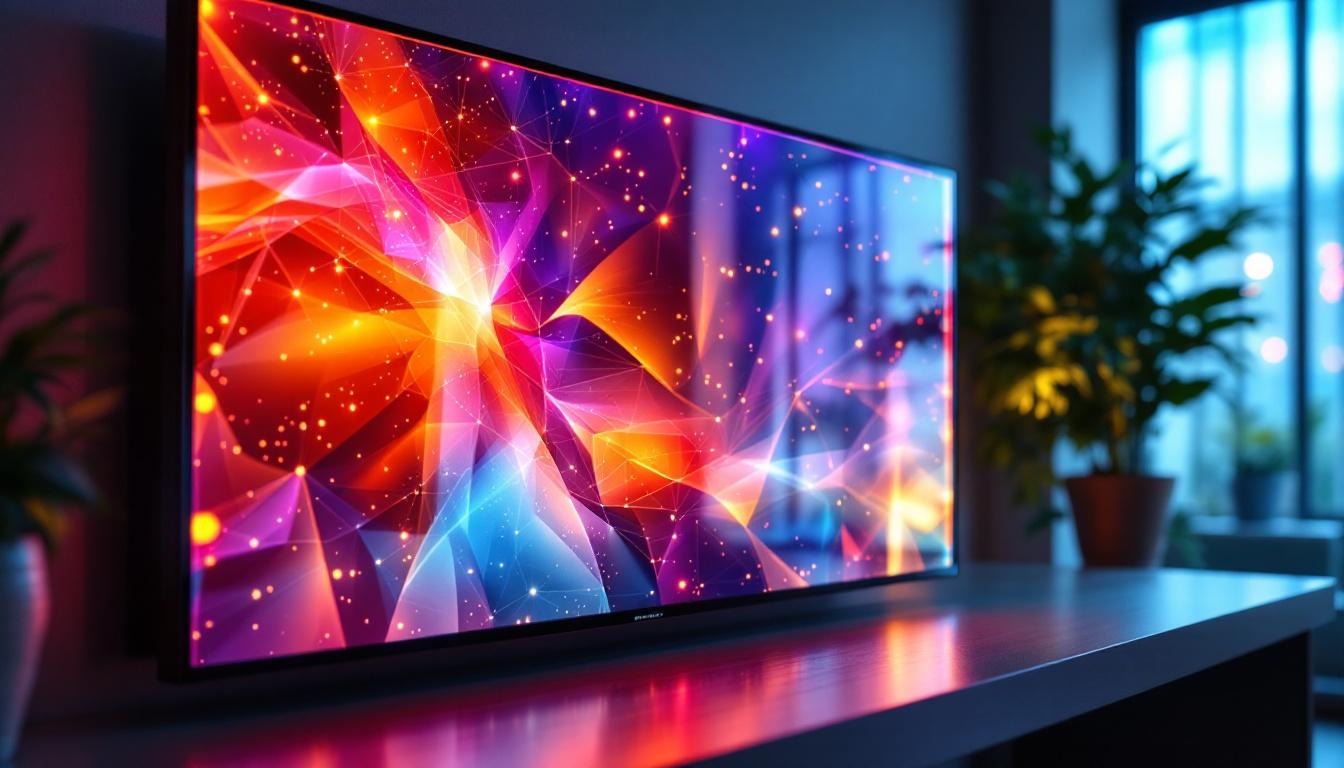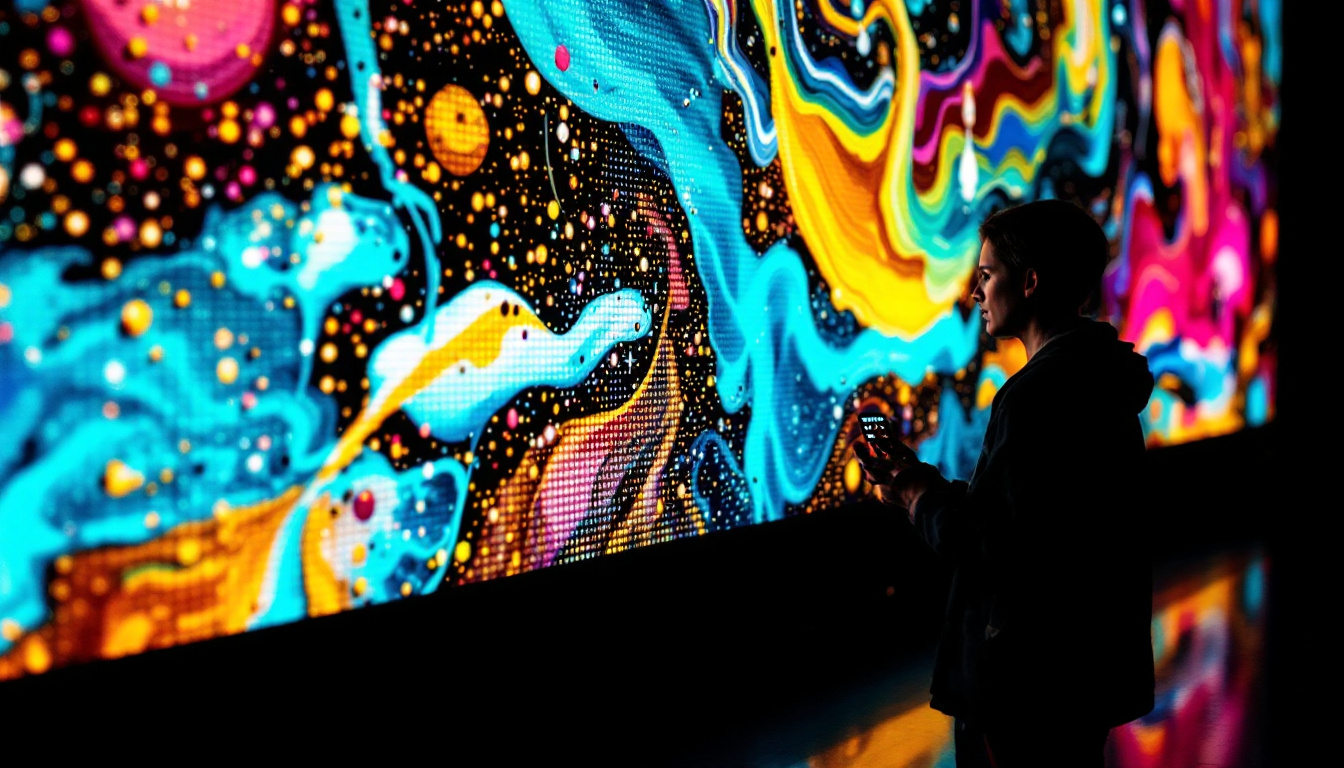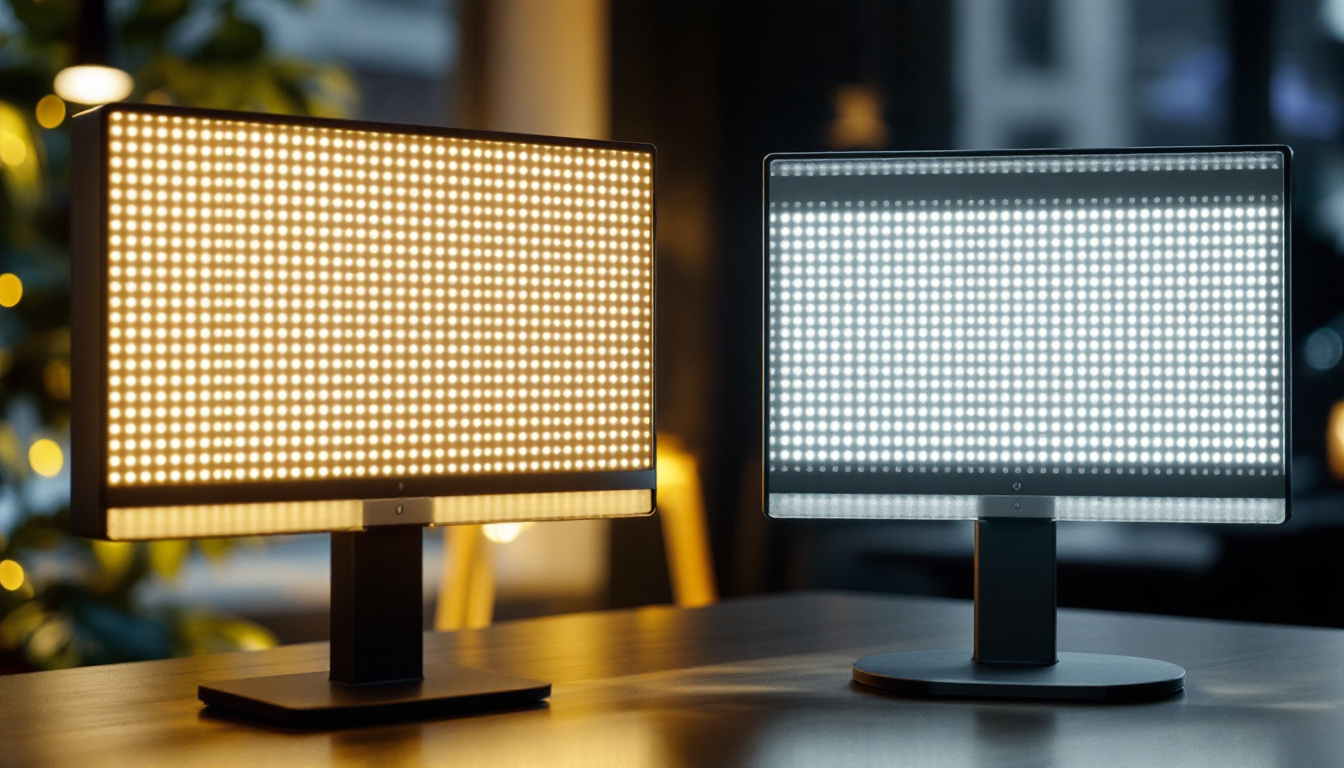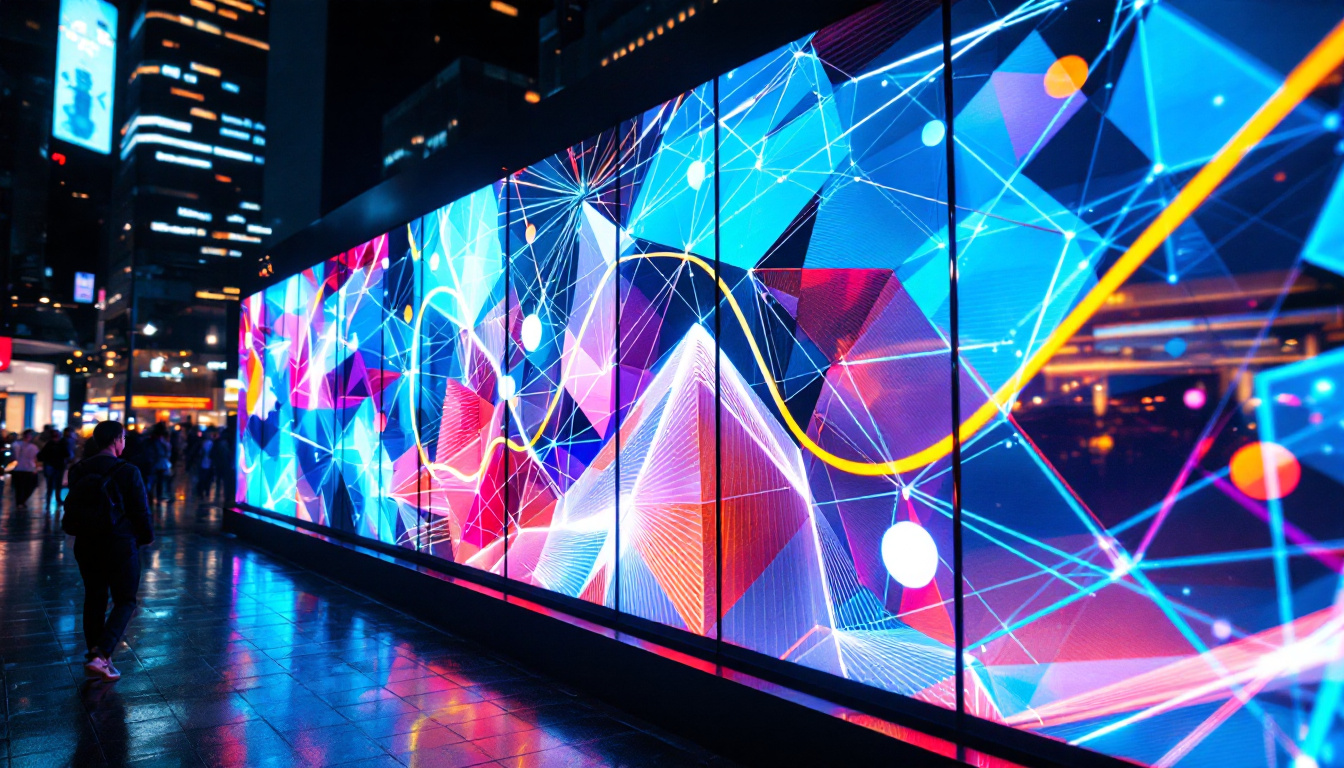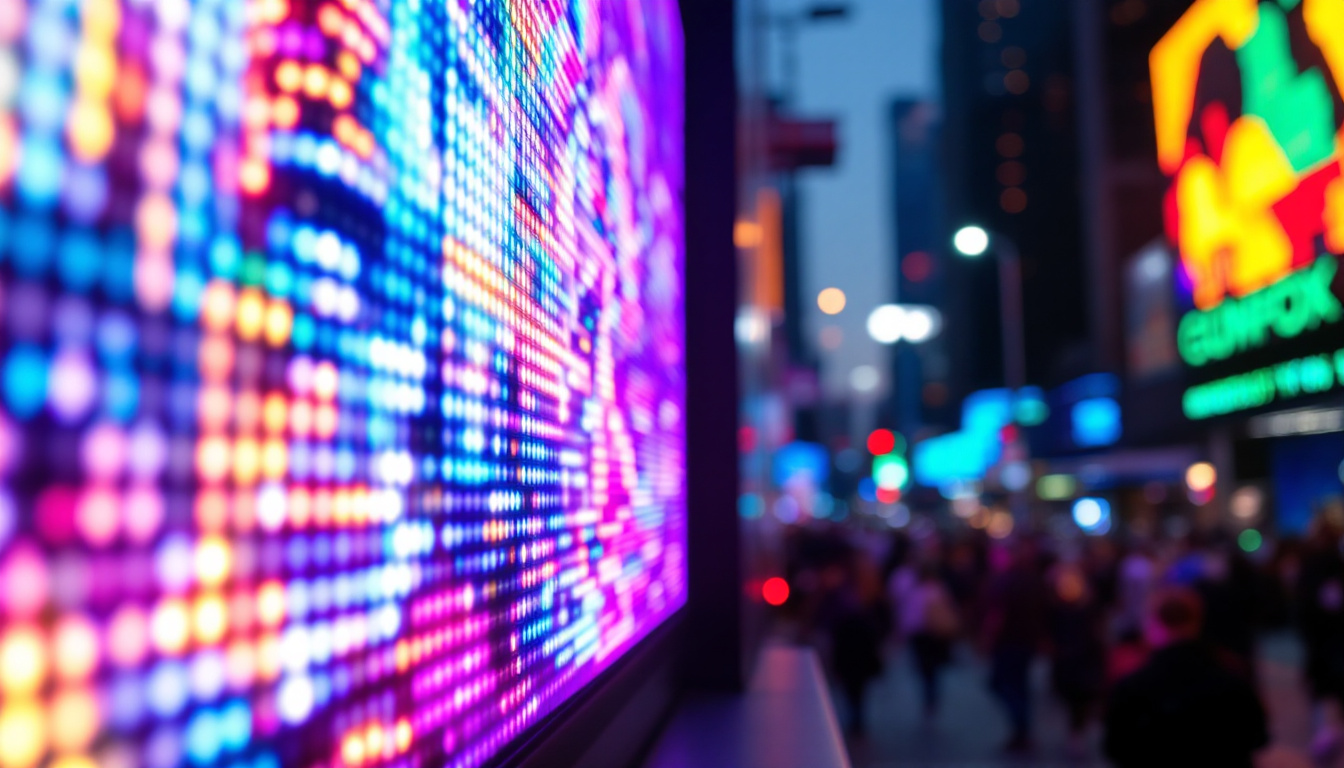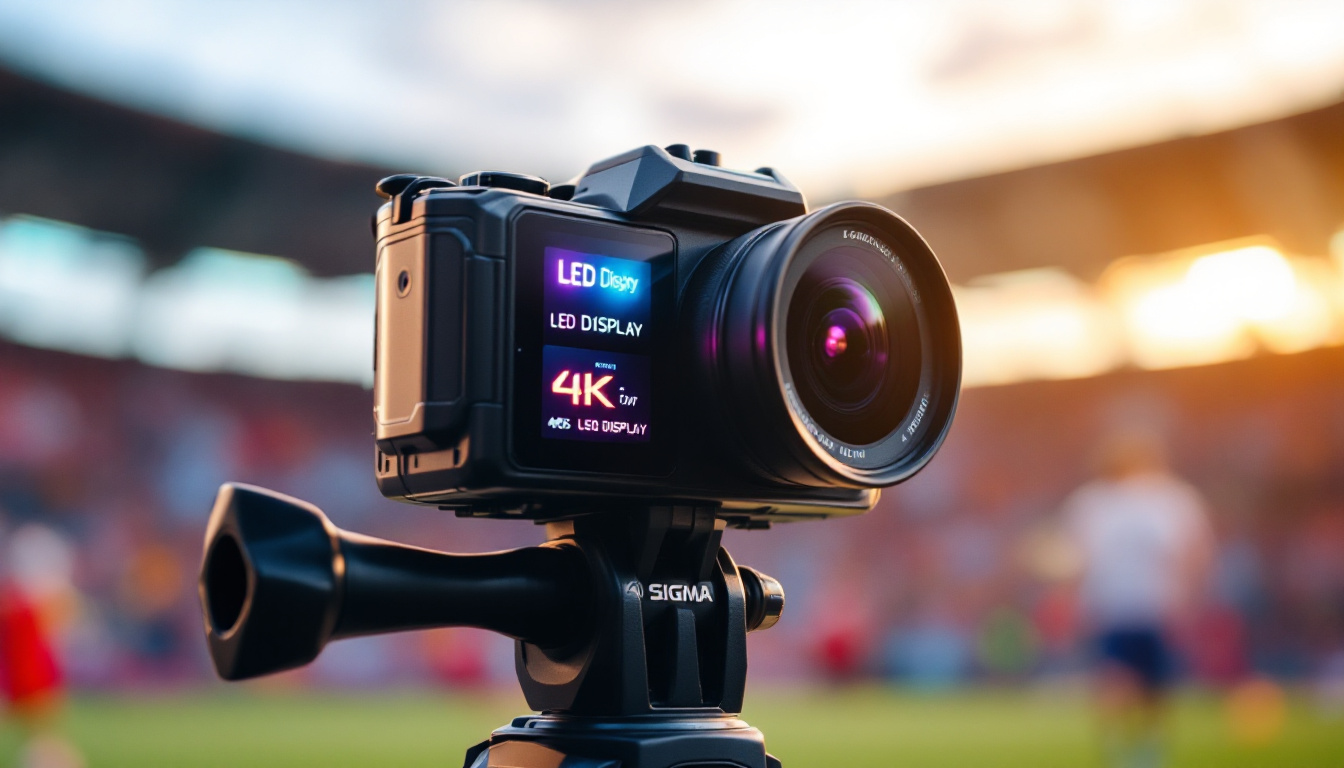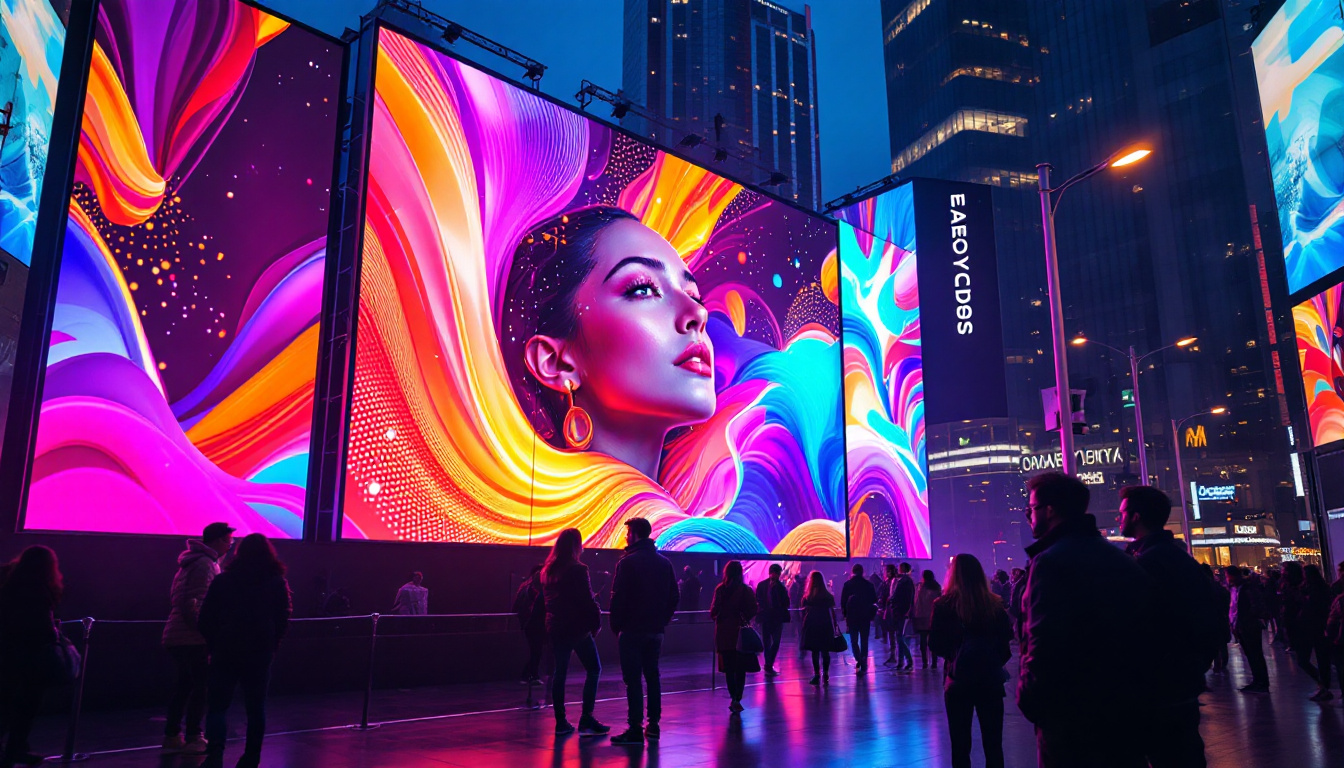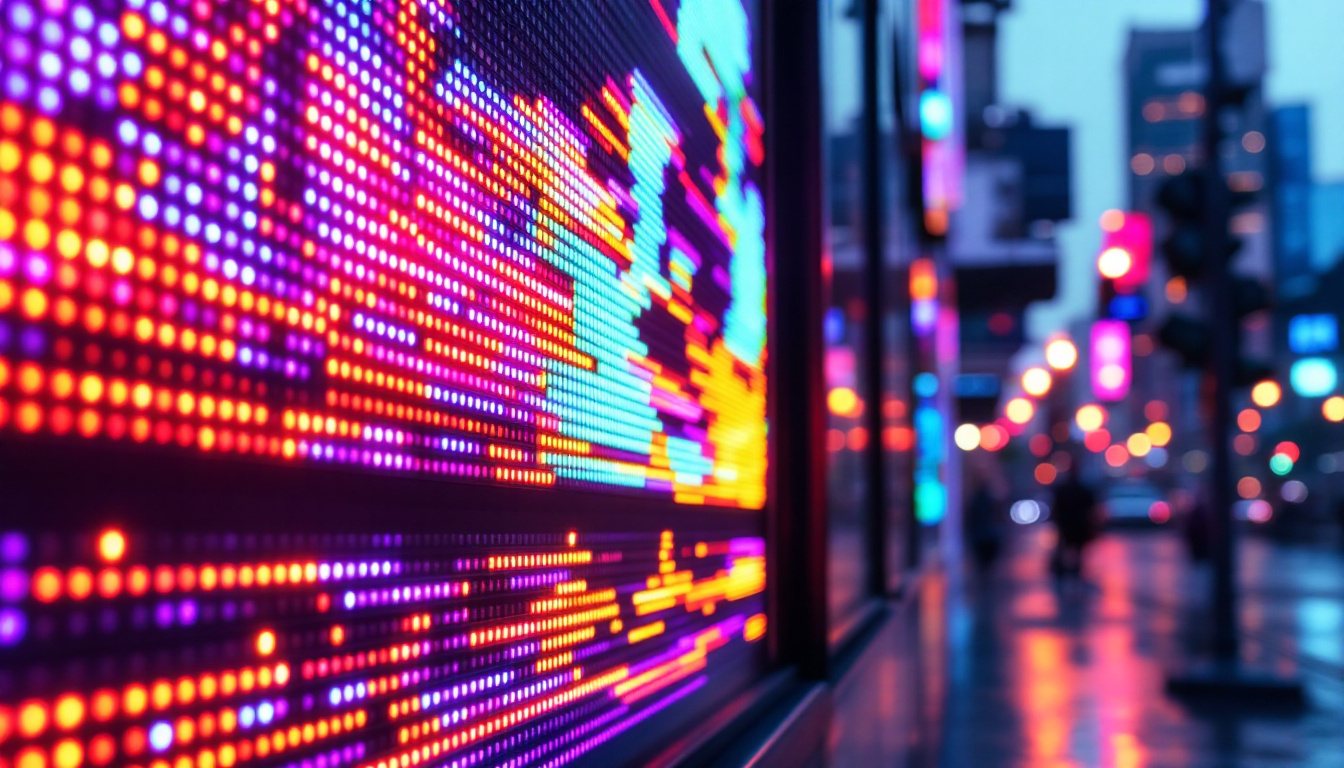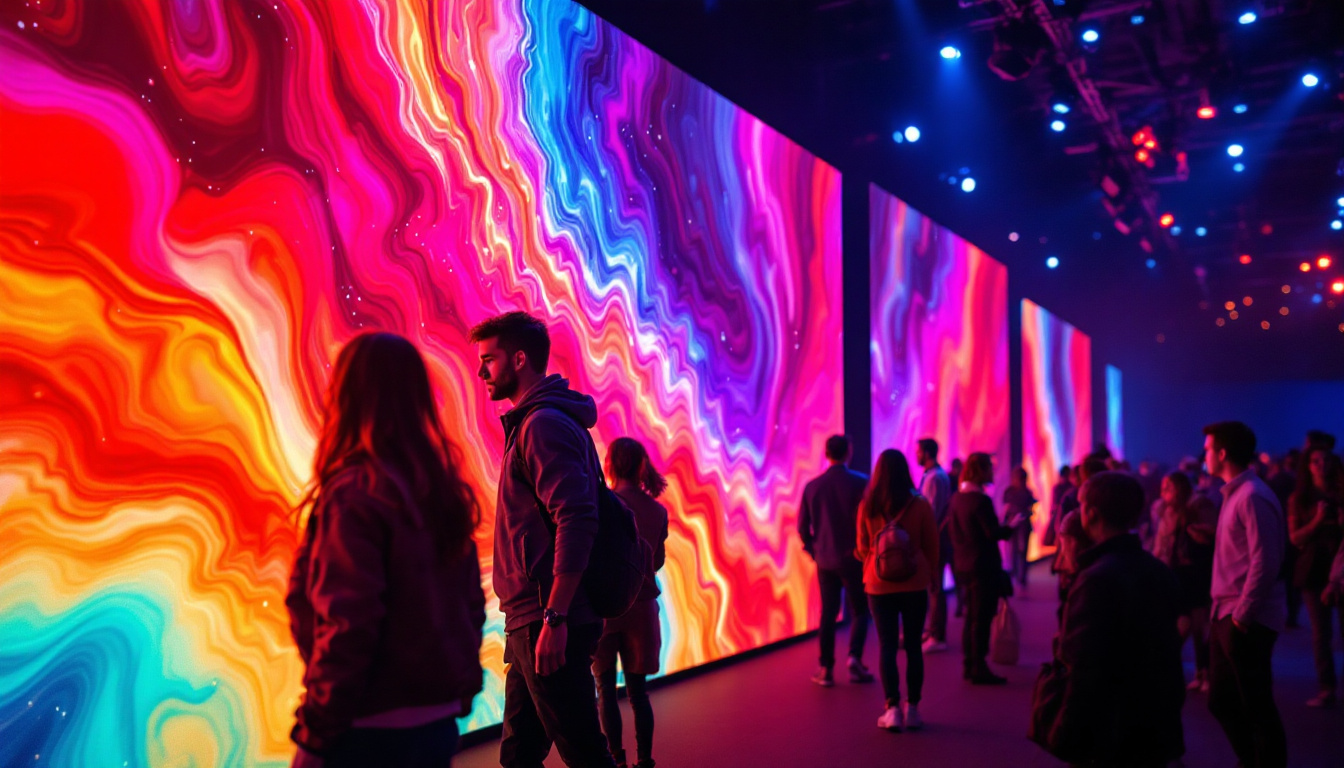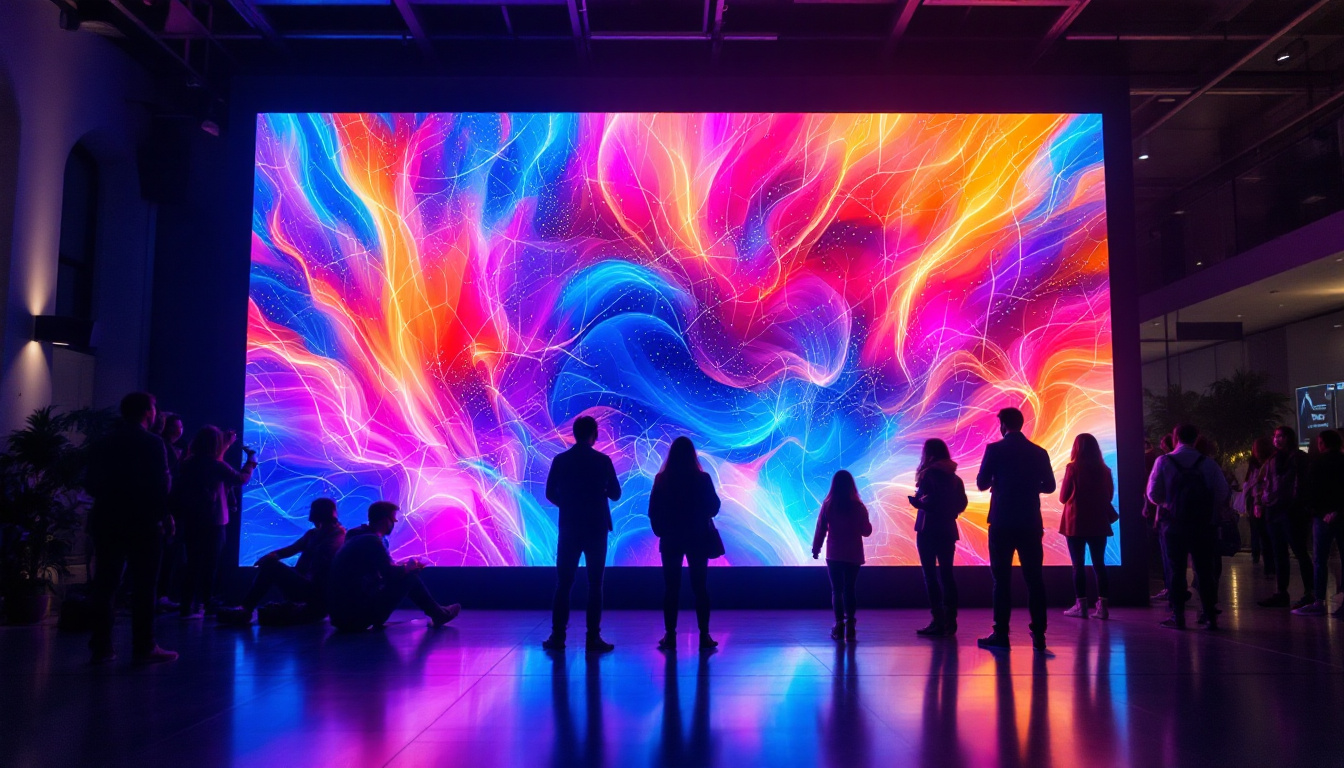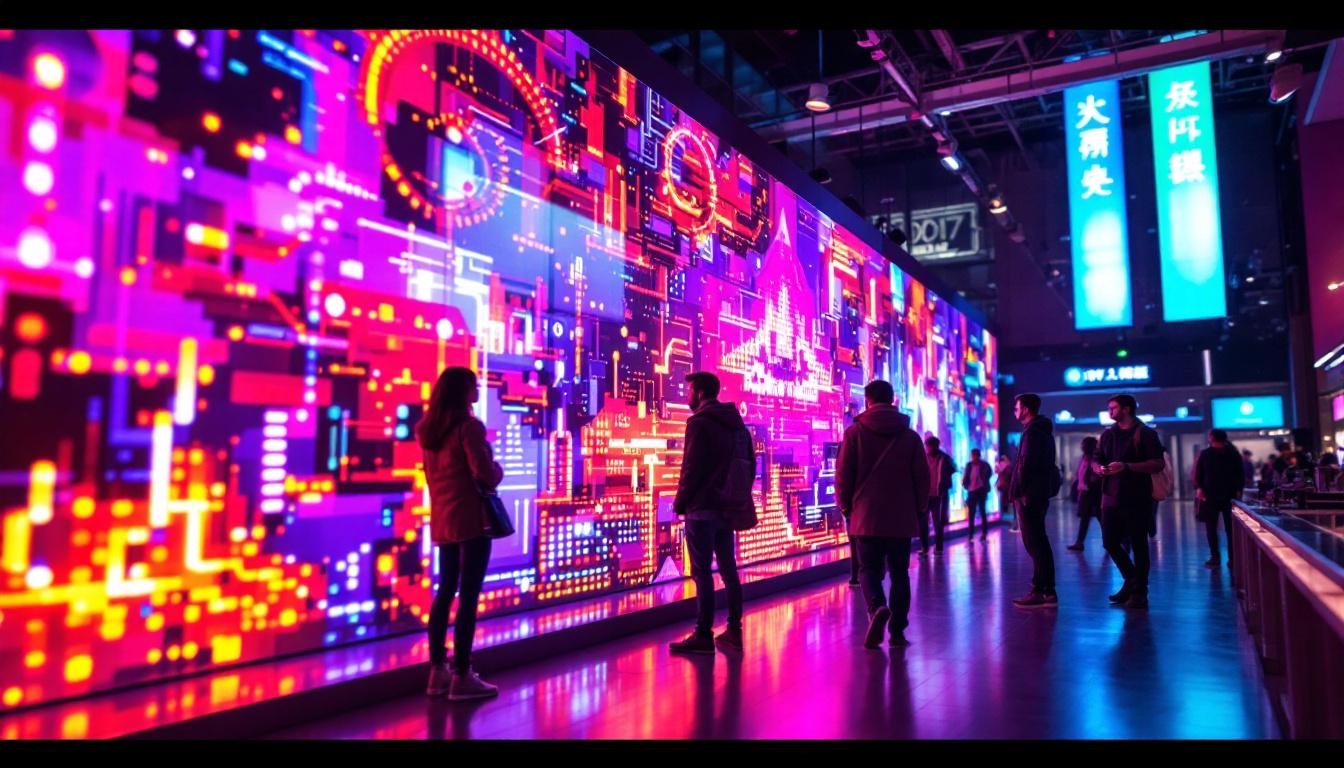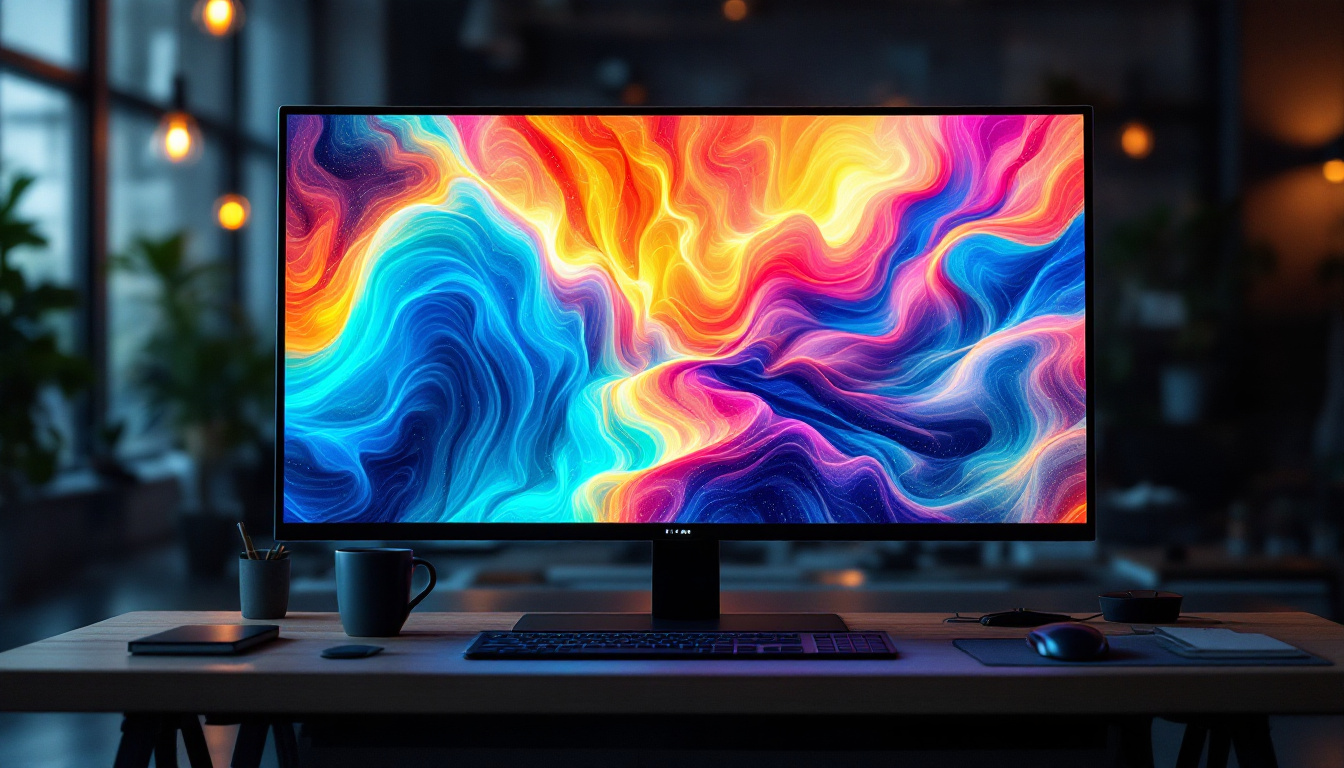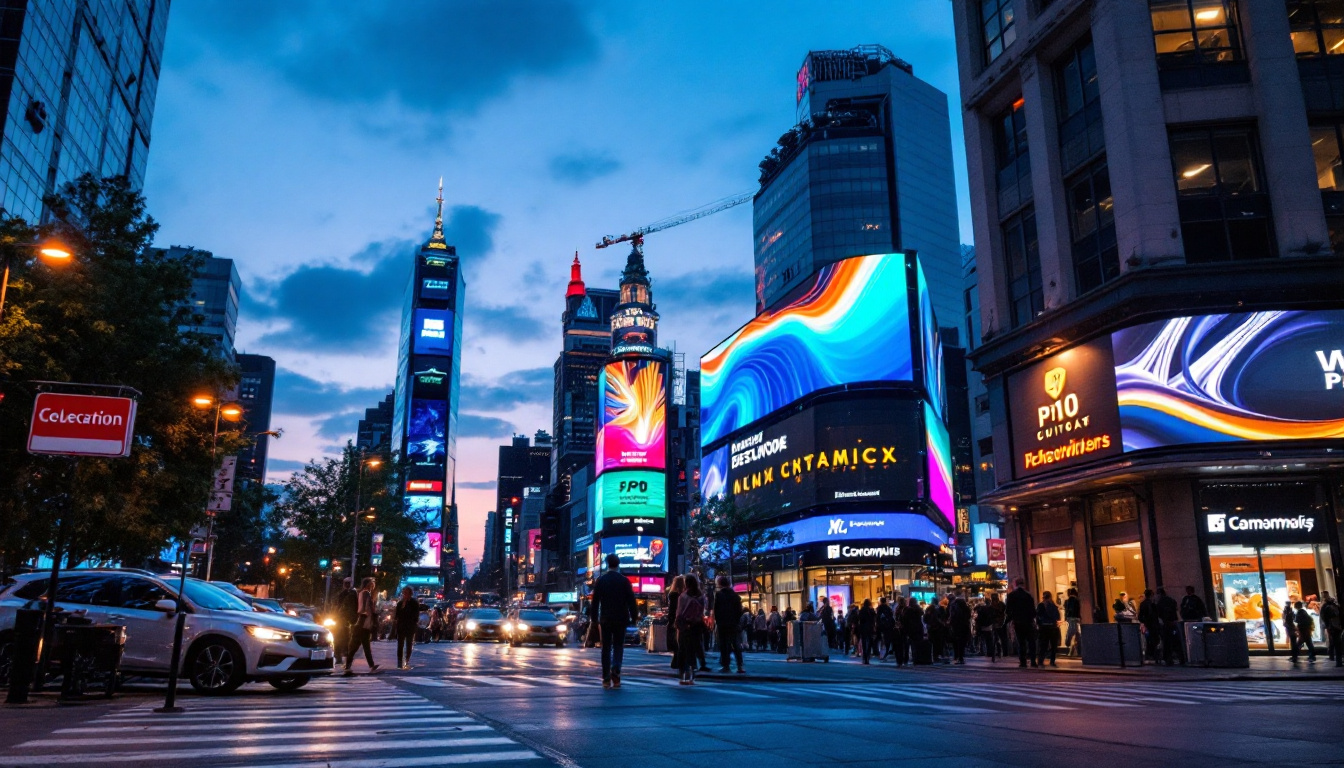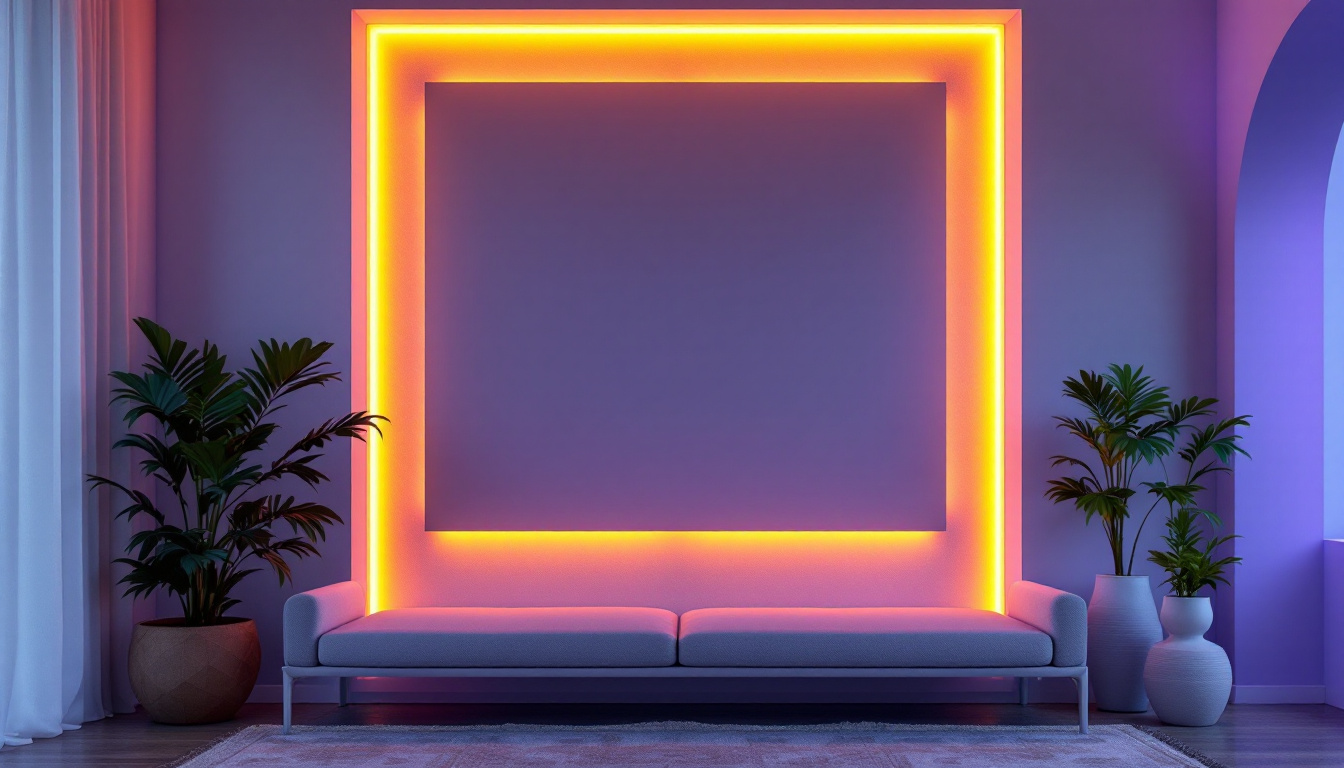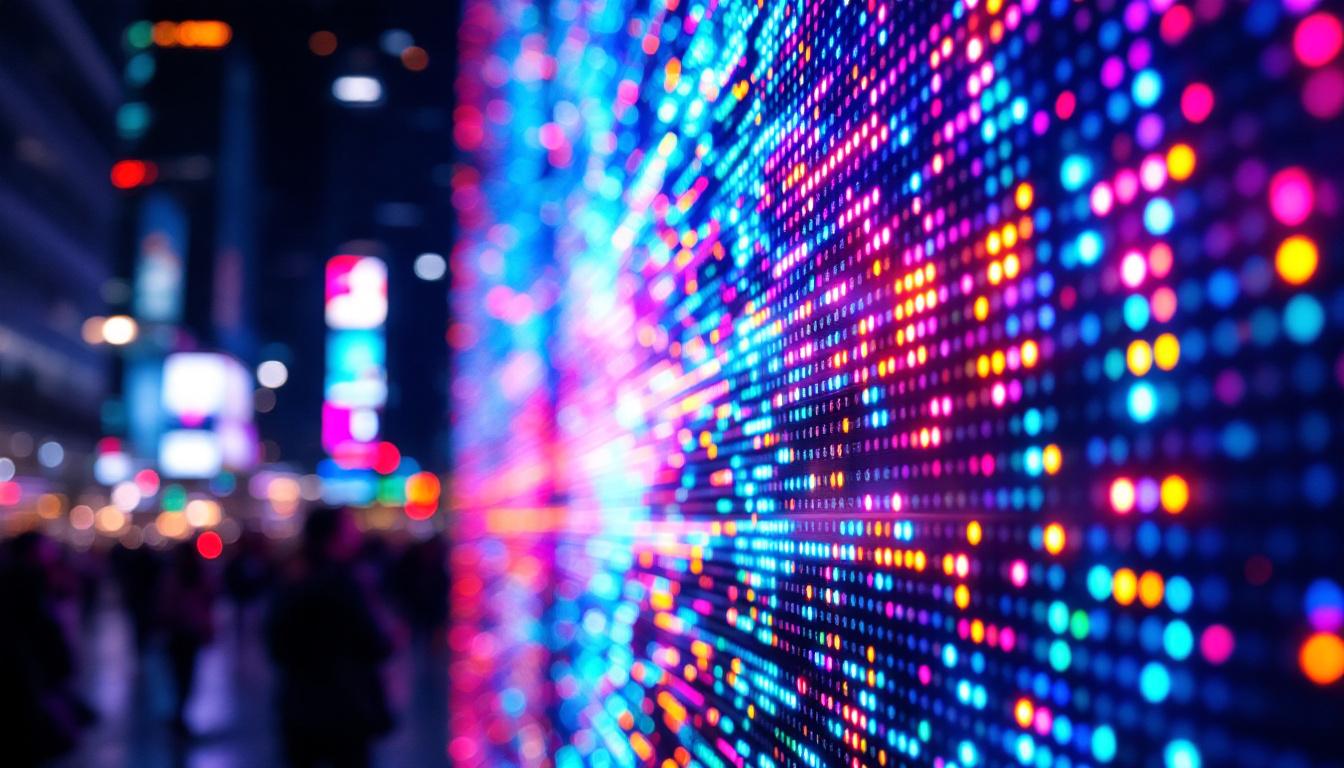In the rapidly evolving world of digital display technology, translucent LED screens have emerged as a groundbreaking innovation. Combining transparency with vibrant visual performance, these displays are reshaping how businesses, advertisers, and architects integrate digital content into physical spaces. This comprehensive article explores what translucent LED screens are, how they work, their applications, advantages, and the future potential of this exciting technology.
Understanding Translucent LED Screens
What Is a Translucent LED Display?
A translucent LED screen is a type of digital display that allows light to pass through it, creating a semi-transparent effect. Unlike traditional LED displays that are opaque and block the view behind them, translucent LED screens maintain visibility through the panel while simultaneously showcasing bright, high-resolution images or videos. This unique characteristic enables these screens to blend seamlessly into glass facades, windows, and other transparent surfaces.
The technology relies on an array of LED modules arranged with gaps between them, allowing natural or artificial light to filter through. The typical transparency rate ranges from 40% to 80%, depending on the pixel pitch and design, which means viewers can see both the displayed content and the environment behind the screen. This feature not only enhances the aesthetic appeal of buildings and installations but also allows for creative advertising solutions that engage passersby without compromising the architectural integrity of the surroundings.
Moreover, translucent LED displays are becoming increasingly popular in urban environments, where they serve as eye-catching billboards or artistic installations. By utilizing these screens, businesses can create a visually striking presence that captures attention while still allowing natural light to illuminate their spaces. This dual functionality is particularly beneficial in retail settings, where product visibility and customer engagement are paramount.
How Do Translucent LED Screens Work?
At the core of translucent LED technology is the strategic placement of LEDs and the use of specialized materials. The LED modules are mounted on transparent substrates, often glass or acrylic panels, with the LEDs spaced apart to create the see-through effect. This spacing is critical; it balances image clarity with transparency.
Each LED emits light to form images or videos, controlled by sophisticated drivers and processing units that synchronize the display content. Because the screen allows ambient light to pass through, it is essential to use high-brightness LEDs—often exceeding 5,000 nits—to ensure visibility even in brightly lit environments like storefronts or outdoor installations. Additionally, advancements in LED technology have led to the development of energy-efficient options that reduce power consumption while maintaining high brightness levels, making these displays not only visually effective but also environmentally friendly.
The integration of these components results in a display that can deliver dynamic digital content without obstructing natural light or views, making it ideal for modern architectural applications. Furthermore, the versatility of translucent LED screens extends beyond mere advertising; they can be utilized in artistic installations, interactive exhibits, and even as part of smart city initiatives, where they can provide real-time information while enhancing the urban landscape. As cities continue to evolve, the role of translucent LED technology in creating engaging and functional public spaces will likely expand, offering new opportunities for innovation and creativity in urban design.
Applications of Translucent LED Displays
Retail and Advertising
One of the most prominent applications of translucent LED screens is in retail environments. Storefront windows equipped with these displays can attract customers by showcasing vibrant advertisements, promotions, or brand storytelling without compromising the view inside the store. This dual functionality enhances customer engagement and elevates the shopping experience.
Leading brands and shopping centers worldwide are adopting translucent LED technology to create eye-catching window displays that operate both day and night. For example, luxury fashion retailers use these screens to present seasonal collections dynamically, while maintaining the elegance of their store interiors visible from the street. Furthermore, the ability to change content remotely allows retailers to adapt their messaging in real-time, responding to trends or special events, which can significantly boost foot traffic and sales.
In addition to fashion, other sectors like electronics and cosmetics are leveraging translucent LED displays to create immersive shopping experiences. Interactive features, such as touch capabilities or augmented reality overlays, can be integrated into these screens, allowing customers to engage with products in innovative ways. This not only enhances the shopping environment but also fosters a deeper connection between consumers and brands.
Architectural Integration
Architects and designers are increasingly incorporating translucent LED screens into building facades and interiors. These displays can transform glass walls into interactive canvases, displaying information, art, or ambient visuals that complement the building’s design.
In urban environments, translucent LED facades contribute to the cityscape by adding dynamic lighting effects and digital art installations without sacrificing natural light or views. This integration supports sustainable design principles by reducing the need for additional lighting and enhancing the building’s aesthetic appeal. Moreover, these displays can be programmed to change based on the time of day or season, allowing buildings to reflect their surroundings and create a more harmonious urban experience.
Additionally, the use of translucent LED technology in architectural designs can facilitate communication and community engagement. For instance, public buildings can use these displays to share important announcements, event schedules, or community art projects, fostering a sense of connection and involvement among residents. This not only enhances the functionality of the space but also encourages a more vibrant and interactive public realm.
Transportation and Public Spaces
Translucent LED displays are also gaining traction in transportation hubs such as airports, train stations, and bus terminals. Their transparency allows for the installation on windows or glass partitions, providing travelers with real-time information, advertisements, or wayfinding cues without obstructing natural light or sightlines.
Public spaces benefit from these displays by incorporating them into glass structures like bus shelters or information kiosks, creating interactive and engaging environments that enhance user experience while maintaining openness. These installations can serve multiple purposes, from displaying transit schedules to showcasing local art or cultural events, thereby enriching the community’s connection to the space.
Furthermore, the adaptability of translucent LED technology makes it an ideal choice for temporary installations at events or festivals. These displays can be set up to provide information or entertainment, creating a lively atmosphere while still allowing for visibility and light. By integrating such technology, cities can enhance the functionality of public spaces and create memorable experiences for both residents and visitors alike.
Advantages of Translucent LED Technology
Enhanced Aesthetic Appeal
One of the most significant advantages of translucent LED screens is their ability to maintain architectural aesthetics. By preserving transparency, these displays avoid the bulky, opaque look of traditional screens, allowing buildings and interiors to retain their design integrity.
This feature is particularly valuable in heritage or high-end commercial buildings where preserving visual openness is crucial. The screens act as a digital layer that complements rather than competes with the physical environment.
Energy Efficiency and Sustainability
Translucent LED displays contribute to energy savings by maximizing the use of natural light. Since they do not block sunlight, they reduce the need for artificial lighting during the day. Additionally, modern LED technology is inherently energy-efficient, consuming less power compared to other display types such as LCD or projection systems.
Furthermore, the lightweight and thin design of these screens reduce installation complexity and material usage, aligning with sustainable building practices.
Flexibility and Customization
Manufacturers offer translucent LED screens in various sizes, pixel pitches, and transparency levels, allowing customization to meet specific project requirements. This flexibility enables seamless integration into diverse architectural elements, from large glass facades to smaller interior partitions.
The ability to tailor brightness, resolution, and transparency makes these displays suitable for both indoor and outdoor use, adapting to different lighting conditions and viewing distances.
Technical Considerations and Challenges
Brightness and Contrast Management
Achieving optimal brightness and contrast is a critical challenge for translucent LED screens. Because ambient light passes through the display, the LEDs must be sufficiently bright to ensure content visibility without causing glare or excessive power consumption.
Advanced brightness control systems and high-quality LED components are essential to balance these factors. Additionally, anti-reflective coatings and screen treatments can improve contrast and reduce unwanted reflections.
Pixel Pitch and Resolution
The pixel pitch—the distance between individual LEDs—directly affects image resolution and transparency. Smaller pixel pitches provide higher resolution but reduce transparency, while larger pitches increase transparency at the expense of image detail.
Designers must carefully select pixel pitch based on the viewing distance and application. For example, a retail window display viewed from the street may prioritize higher transparency with a larger pixel pitch, whereas an indoor partition might require finer resolution.
Installation and Maintenance
Installing translucent LED screens demands precise alignment and secure mounting to ensure both visual performance and structural safety. Because these displays are often integrated into glass surfaces, collaboration between display manufacturers, architects, and construction teams is vital.
Maintenance considerations include accessibility for repairs, cleaning protocols to avoid damage to the transparent substrate, and ensuring consistent performance over time. Many manufacturers provide modular designs that facilitate easy replacement of individual LED modules.
The Future of Translucent LED Displays
Technological Advancements
Ongoing research and development are driving improvements in LED efficiency, miniaturization, and materials science. Emerging technologies such as micro-LEDs promise even higher resolution and brightness with improved energy efficiency, potentially revolutionizing translucent display capabilities.
Integration with smart building systems and Internet of Things (IoT) platforms will enable dynamic, context-aware content that responds to environmental conditions, user behavior, or real-time data feeds, enhancing interactivity and functionality.
Expanding Market Potential
As costs decrease and technology matures, translucent LED screens are expected to become more accessible to a broader range of industries and applications. Beyond retail and architecture, sectors such as healthcare, education, and entertainment are exploring these displays for innovative use cases.
For instance, hospitals may use translucent screens for patient information displays that maintain privacy while providing essential data, while museums can create immersive exhibits that blend digital content with physical artifacts.
Environmental and Social Impact
The adoption of translucent LED technology aligns with global trends toward sustainable and human-centric design. By enhancing natural light use and reducing energy consumption, these displays contribute to greener building practices.
Moreover, their ability to deliver engaging, transparent digital content supports more open and connected public spaces, fostering community interaction and accessibility.
Conclusion
Translucent LED screens represent a transformative advancement in digital display technology, merging transparency with vivid visual communication. Their unique ability to integrate seamlessly into glass surfaces opens up new possibilities for retail, architecture, transportation, and public spaces.
While technical challenges remain, continuous innovation is expanding their capabilities and applications. As businesses and designers seek to create more engaging, sustainable, and aesthetically pleasing environments, translucent LED displays are poised to play a central role in the future of digital signage and architectural integration.
Understanding the technology, benefits, and practical considerations of translucent LED screens is essential for stakeholders looking to leverage this cutting-edge solution to enhance visibility, engagement, and design impact.
Discover LumenMatrix’s Innovative LED Solutions
Ready to elevate your space with the latest in LED display technology? LumenMatrix is at the forefront of creating immersive environments with our comprehensive range of LED display modules. From vibrant Indoor and Outdoor LED Wall Displays to dynamic Vehicle and Sports LED Displays, and even customizable solutions like Floor and Custom LED Displays, we have everything you need to transform your visual communication. Experience the future of digital signage with our All-in-One and LED Transparent Displays, designed to captivate your audience and amplify your brand’s message. Check out LumenMatrix LED Display Solutions today and see how our commitment to innovation can help you create unforgettable visual experiences.

